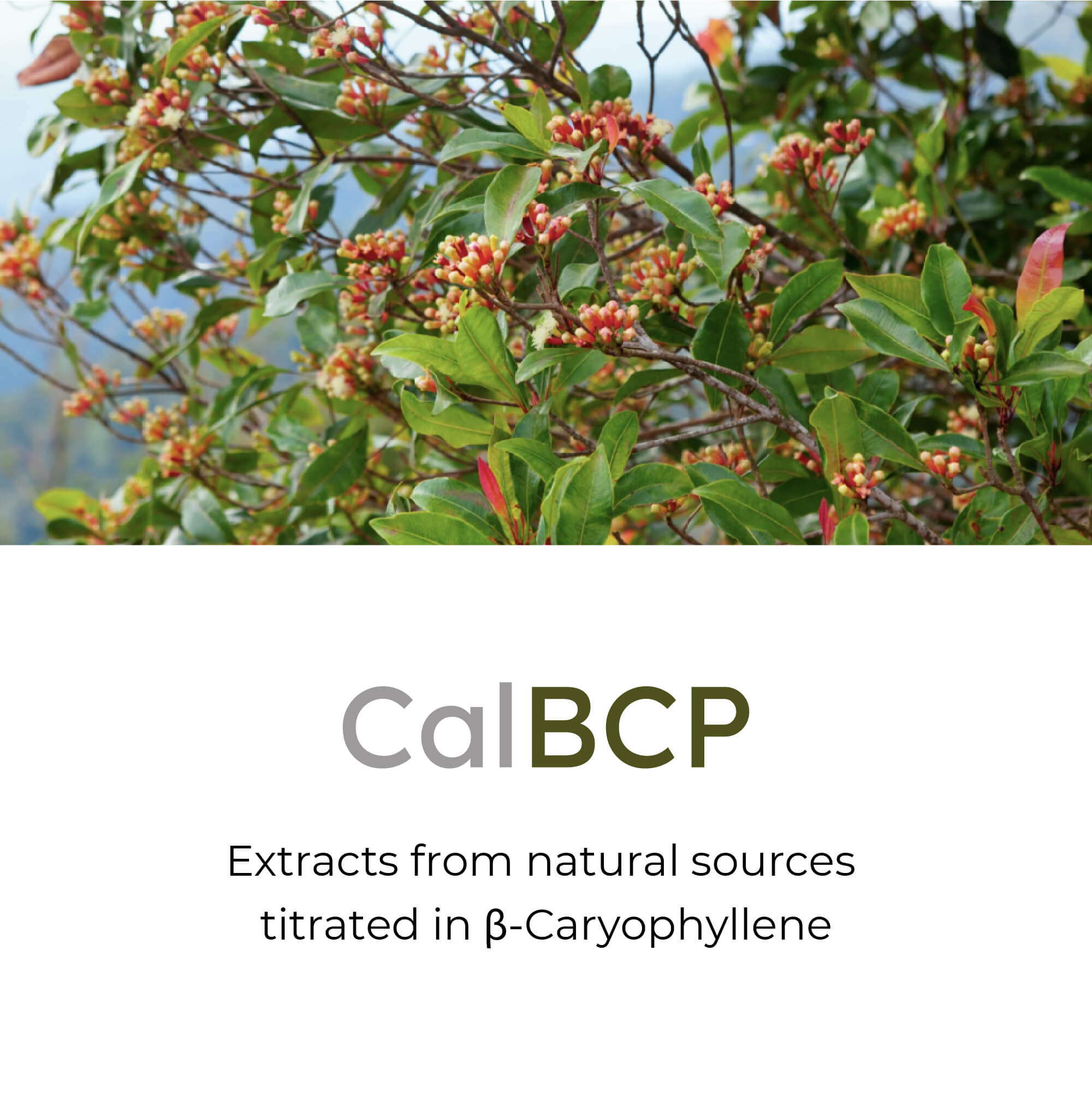
CalBCP is an exclusive line of Calliero S.p.A products aimed at providing the widest range of standardized sources with a high content of (E)-β-Caryophyllene (BCP) on the market.
The innovative techniques of extraction and molecular fractionation, carried out without the use of solvents, are developed internally by the R&D team and allow to obtain standardized BCP fluid extracts, free of unwanted or potentially problematic substances.
Production is carried out entirely by Calliero S.p.A. in the Moretta (CN) Italy plant, without the use of semi- finished products from external sources or intermediaries.
ANALYTICAL TECHNIQUES
The identification of BCP in the products of the CalBCP line, is carried out by gas chromatography coupled to triple quadrupole mass spectrometry (GC-MS-QQQ), while the quantification is obtained by gas chromatography coupled to a flame ionization detector (GC-FID) through the use of internal standards and external calibration curves. The search for toxins, pesticides and impurities is carried out by both UHPLC-ESI and GC combined with a triple quadrupole mass detector.
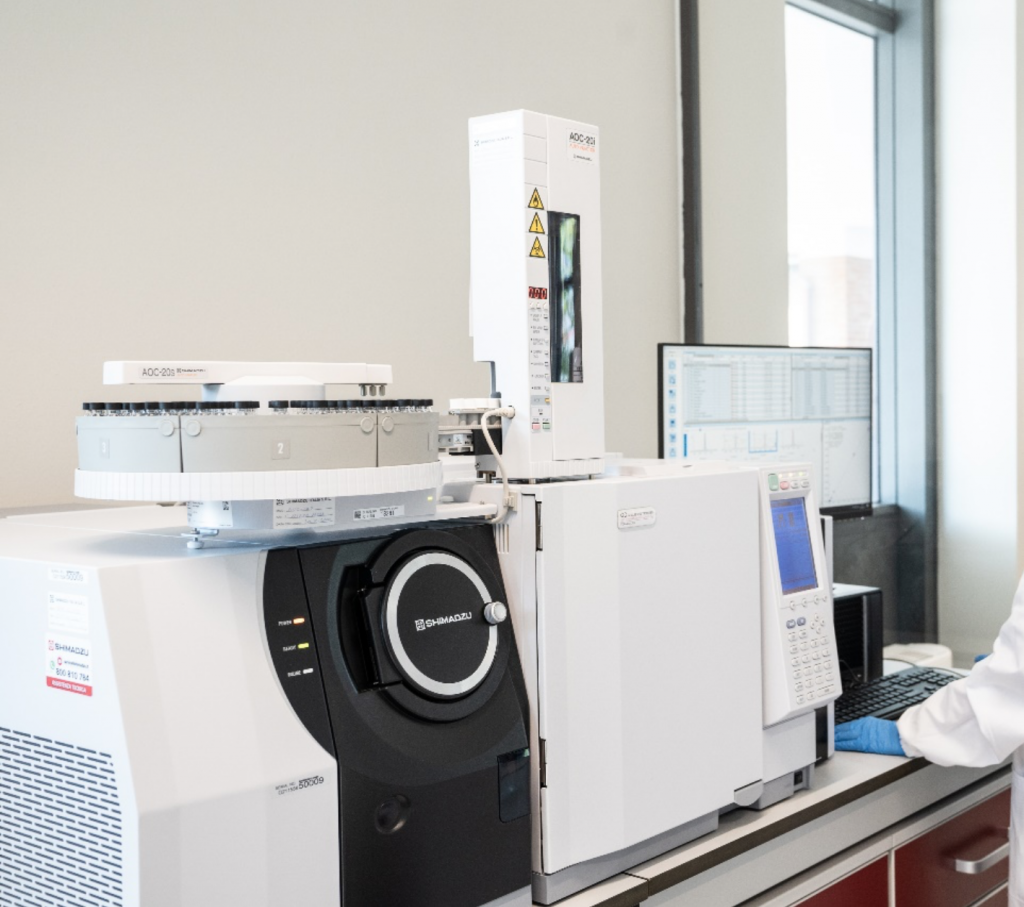
EXTRACTION TECHNIQUES AND PRODUCTION CAPACITY
The essential oils are extracted with an extractor with a capacity of 150 kg/day and the yield in extract is 10 kg/day. On an annual basis, the production capacity is a few tons and is carried out entirely by Calliero S.p.A. in the Moretta (CN) Italy plant, without the use of intermediaries or the purchase of semi-finished products. High quality raw materials are selected by the best manufacturing companies located in the areas of origin of the different species. The amount of oils extracted allows a high standardization of the batches and a guarantee of production.
The oils are then subjected to molecular fractionation to increase the BCP content and eliminate unwanted compounds. For instance, in the CalBCP-SA product, extracted from cloves, particular attention is paid to the removal of the toxic compound eugenol.
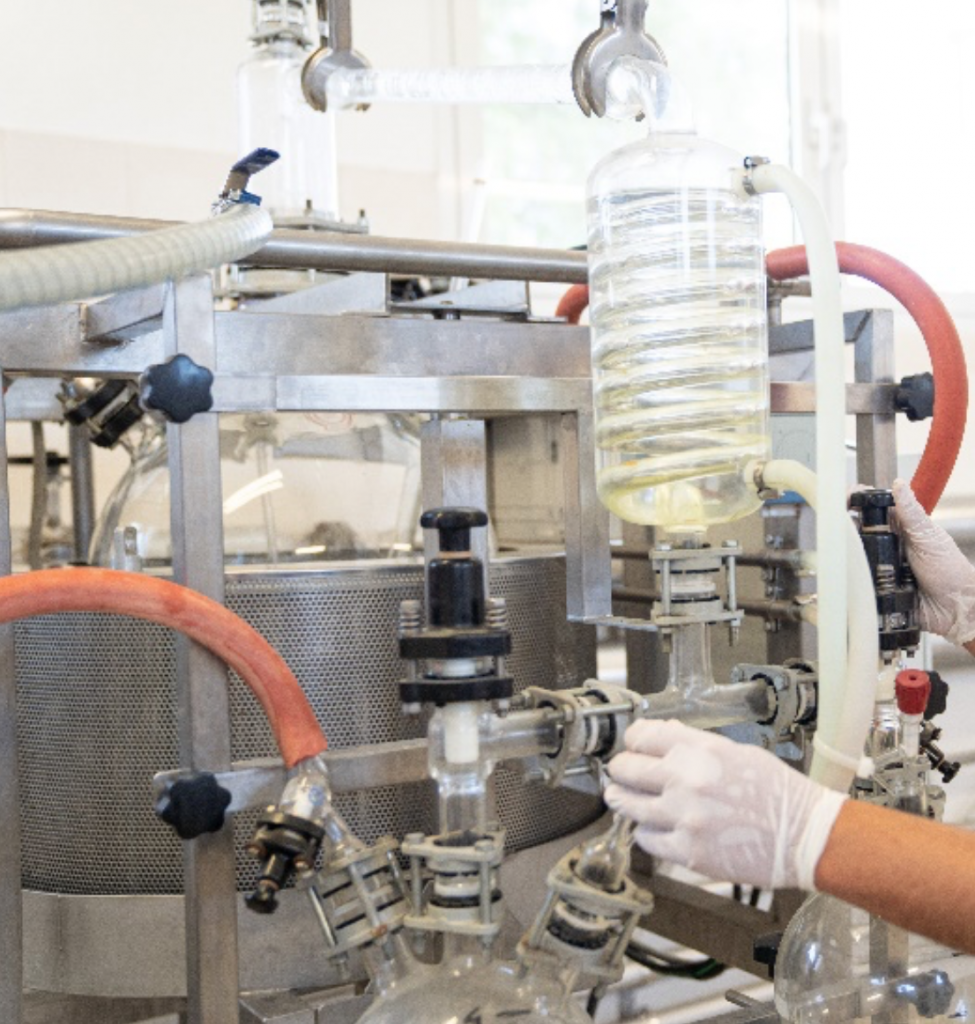
Innovative extraction and pulverization techniques and molecular fractionation have allowed Calliero S.p.A. to obtain stable and standardized products with a high BCP content and free from potentially toxic substances, excipients or elements unrelated to the starting botanical species.
NATURAL SOURCES AND PROPERTIES OF (E)-β-Caryophyllene (BCP)
The sesquiterpene hydrocarbon (E)-β-caryophyllene (BCP) is one of the most studied and promising natural compounds [Scandiffio et al. 2020] and is one of the most common sesquiterpenes in floral volatiles, present in more than 50% of angiosperm families. A recent study has identified several plants capable of producing high percentages and high yields of BCP [Maffei 2020]. The work analyzed over 300 species and identified some species of particular importance such as Copaifera langsdforffii, Cananga odorata, Humulus lupulus, Piper nigrum and Syzygium aromaticum, all listed on the Belfrit list, which provide a high percentage of BCP along with interesting yields of essential oils. These species have a high potential for using BCP for the preparation of nutraceutical and pharmaceutical products [Maffei 2020].
In recent years, the modulatory and pharmacological effects of BCP have been demonstrated in numerous organs such as the liver [Calleja et al. 2013], the kidneys [Horváth et al. 2012] and the brain [Javed et al. 2016]. BCP also exerts therapeutic effects with antioxidant [Calleja et al. 2013] and anti-inflammatory [Dahham et al. 2015] properties.
BCP is a fully selective agonist of CB2 cannabinoid receptors [Gertsch et al. 2008], one of the key points of the endocannabinoid system (ECS). The ECS is an endogenous system that exerts a regulatory control over food intake, metabolism and calorie accumulation and therefore represents a potential pharmacotherapeutic target for a wide range of metabolic disorders such as obesity, dyslipidemia, steatosis, diabetes. and eating disorders [Gatta-Cherifi & Cota 2015]. The ECS is also involved in the regulation of inflammation [Turcotte et al. 2015] and in the modulation of depression, schizophrenia and chronic pain [Machado et al. 2018]. The selectivity of BCP for CB2 receptors avoids potential psychotropic effects mediated by cerebral CB1, typical of cannabis-based products, because CB2 receptors are mainly expressed in peripheral tissues and CNS immune cells (microglia) [Aymerich et al. 2018].
In addition to CB2 receptors, BCP has recently been shown to interact with members of the peroxisomal proliferator-activated receptor (PPAR) family, in particular PPARα and γ, transcription factors belonging to the superfamily of nuclear receptors activated by ligands [Wu et al. 2014].
Due to its lipophilicity, BCP easily penetrates cell membranes, while having good oral bioavailability and a very broad therapeutic window, with an oral LD50 greater than 5 g / kg [Fidyt et al. 2016]. A significant and dose-dependent antinociceptive response was produced by BCP without the presence of gastric damage [Ibrahim et al. 2005]. The antiallodinic actions of BCP are exerted only through the activation of local peripheral CB2 [Fidyt et al. 2016].
In neuropathic pain models, BCP reduced spinal neuroinflammation and oral administration was more effective than subcutaneously injected synthetic CB2 agonist JWH-133. Therefore, BCP can be very effective in the treatment of long-lasting debilitating painful states [Klauke et al. 2014].
From the above, BCP appears to be a potential candidate in the treatment of chronic inflammation due to its cellular targets and very low toxicity; in fact, it is now widely accepted that BCP is involved in the activation of PPARs and the endocannabinoid system, with its main role as an agonist of CB2 receptors, thus balancing the production of pro-inflammatory cytokines and reducing the so-called state of metaininflammation [Scandiffio et al. 2020]. Furthermore, BCP-induced reduction of proinflammatory mediators IL-1β, IL-6, TNF-α, NF-κB strengthens the biological role of BCP in modulating cellular responses and contributes to the definition of its effects in chronic diseases characterized by inflammation.
These are the BCP sources used for CalBCP:
CalBCP-SA: extracted from Syzygium aromaticum (L.) Merr. & Perry with a standardized BCP content of 900 g/Kg (90%) in liquid form free of eugenol
Syzygium aromaticum (L.) Merr. & Perry is synonymous with Eugenia caryophyllata Thunb. (Myrtaceae). The commercial part is also known as cloves which contain a significant amount of terpenoids extracted as essential oil (150-180 ml/Kg). The main constituent is eugenol (75-80%) which occurs as a free molecule and in the form of eugenyl acetate. It is accompanied by many other terpenic compounds including BCP.
Recent research has shown that S. aromaticum extract could improve diabetes-induced kidney damage by inhibiting glucotoxicity and oxidative stress via the Nrf2/Glo1 pathway [Do et al. 2020], while the most widespread applications are both as antibacterial and antifungal [Das et al. 2020; Okmen et al. 2018] and as an anti-inflammatory [Humbal et al. 2019]. Most of the pharmacological and pharmacokinetic studies related to S. aromaticum are related to eugenol, however although eugenol has been recognized as a GRAS food additive by the Federal Food, Drug and Cosmetics Administration, it can undergo biotransformation and can potentially form oxidative damage and DNA adducts. This compound can be toxic to the immune system and may cause DNA mutations in animal cells, leading to cancer [Pavithra 2014; Scandiffio et al. 2020]. In addition, eugenol-quinone methide is formed in hepatocytes which is responsible for the cytotoxicity mediated by eugenol; finally, methyl eugenol, a derivative of eugenol, is hepatotoxic [Martins et al., 2018]. EFSA has defined a daily consumption of 1.5 mg/day as the maximum dose for eugenol [EFSA, 2009]. For this reason, Calliero S.p.A. has developed a molecular fractionation technique aimed at permanently eliminating eugenol from the S. aromaticum extract and at the same time producing extracts with a high standardized BCP content.
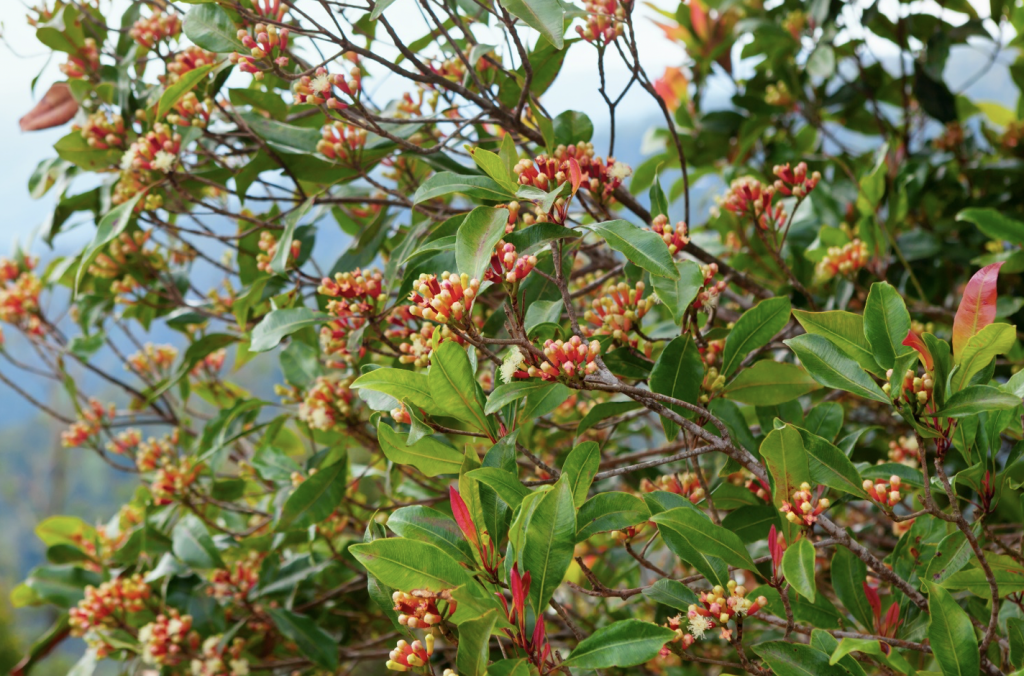
CalBCP-CL: extracted from Copaifera langsdorffii Desf. with a standardized BCP content of 700 g/Kg (70%) in liquid form
Copaifera langsdorffii Desf. (Fabaceae) is a South American widely distributed tropical tree [Souza et al., 2019]. The tree produces an oleoresin popularly known as copaiba oil. The total percentage of oleoresin terpenes is made up of 80% sesquiterpenes, and 20% diterpenes. Among the sesquiterpenes, the most abundant is BCP (50-33%) [Tobouti et al., 2017; Gramosa et al., 2010].
Copaiba oleoresin is widely used in traditional medicine thanks to its anti-inflammatory, healing, antiseptic, bactericidal and gastroprotective activities [Abrao et al., 2015]. Topical treatment with copaiba essential oil has the ability to reduce wound regeneration time [Estevão et al., 2013]. Studies have also shown great potential against oral bacteria [Diefenbach et al., 2018]. Copaiba oleoresin also boasts various ethnopharmacological indications, including: back pain, psoriasis, as an antiseptic for wounds, aching joints and general inflammation.
In order to provide the maximum concentration of BCP, Calliero S.p.A. has developed molecular fractionation techniques that guarantee the elimination of unwanted terpenes and the increase in the BCP titre associated with the standardization of the product.

CalBCP-CO: extracted from Cananga odorata (Lamark) J.D. Hooker & Thomson, forma macrophylla with a standardized BCP content of 500 g/Kg (50%)in liquid form and 90 g/Kg (9%) of α-Humulene
Cananga odorata (Lam.) Hook f. et Thomson, forma macrophylla (known as Cananga, while the forma genuina is more commonly known as ylang-ylang) belongs to the Annonaceae family and is native to Asia [Kristiawan et al., 2012]. C. odorata flowers provide different grades of an essential oil whose volatile compounds are largely grouped as monoterpenes and sesquiterpene hydrocarbons including BCP [Qin et al., 2014]. The percentage of BCP contained in Cananga oil varies from 18.2% to 40% [Maffei 2020].
C. odorata has been used in folk medicine for the treatment of malaria, fever, as an antidepressant, for headache, inflammation of the eyes and gout. It also acts on lowering blood pressure which suggests its potential use in the management of hypertension [Tan et al., 2015]. Anxiolytic properties are also known [Zhang et al., 2016]. Studies indicate that taking C. odorata oil as a food ingredient does not pose a risk to human health.
Also for this species and in the desire to obtain the maximum concentration of BCP, Calliero S.p.A. has developed molecular fractionation techniques that guarantee the standardization of the product.
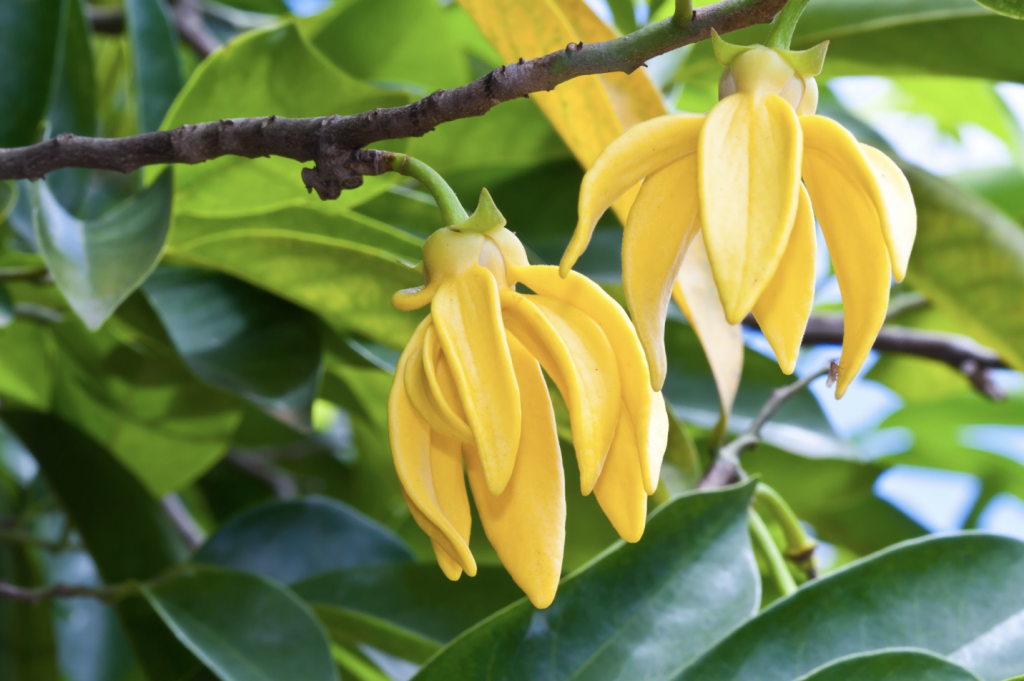
PACKAGING
All products are delivered in high quality aluminium containers especially designed for packaging, transport and storage of value products. The containers are made of 1050A grade Aluminium with inner coating and available in sizes from 2 Kg to 25 Kg for powders and from 50 gr to 25 Kg for liquids. These containers not only guarantee an optimal tightness, but also a high level of chemical, microbiological and particle cleanliness.
Our delivery system is based on three main concepts:
Safety: Secured transport with a lever lock ring closure, nitrile (or silicone) gasket and an aluminum lid for powders and PP cap with tamper evident tear off ratchet ring and PE plug with tear off ring for liquids; high resistance and tightness even when exposed to high pressure differences; compatible with anti-tamper seals; no residue after use; excellent mechanical resistance against shocks, perforations and compressions caused during transport. Moreover, they are compliant to the European standard regulation for food contact.
User friendly: Easy to use and to empty with a 220 mm (8.66 in) wide open top for powders and from 22 mm to 46 mm (0.9 to 1.8 in) bottle neck for liquids; easily washable and sterilizable. The liquid containers allow precise drop, easy pouring and a standard closure. Bottles from 1 to 25 Kg are equipped with a rotating handle that helps to manipulate the bottles.
Environmentally friendly: 100% recyclable high scrap value aluminum monoblock.
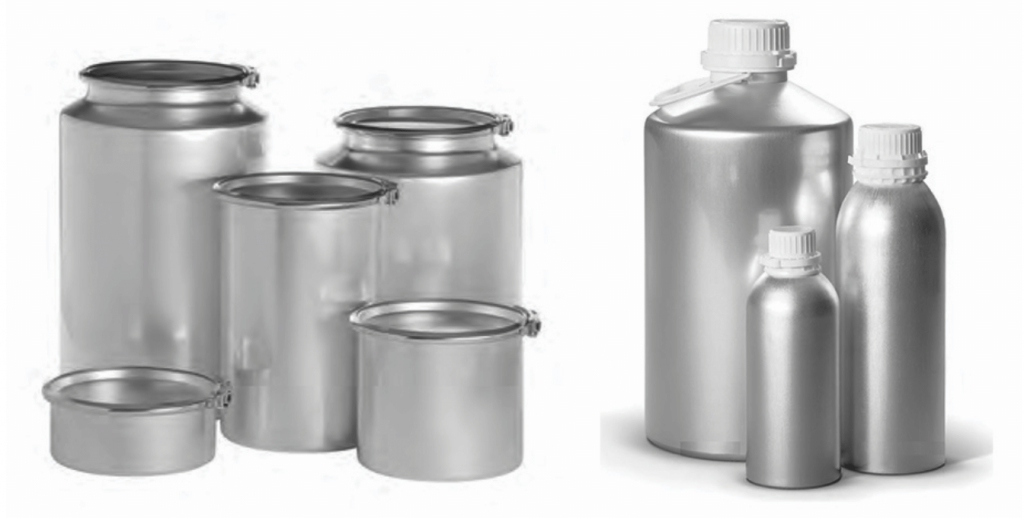
Aymerich, M.S. et al. (2018) Cannabinoid pharmacology/therapeutics in chronic degenerative disorders affecting the central nervous system. Biochem. Pharmacol. Vol. 157 pp. 67–84.
Bocquet, L. et al. (2018) Humulus lupulus L., a very popular beer ingredient and medicinal plant: overview of its phytochemistry, its bioactivity, and its biotechnology. Phytochem. Rev. Vol. 17 pp. 1047-1090.
Calleja, M.A. et al. (2013) The antioxidant effect of β-caryophyllene protects rat liver from carbon tetrachloride-induced fibrosis by inhibiting hepatic stellate cell activation. Br. J. Nutr. Vol. 109 pp. 394–401
Dahham, S. et al. (2015) The anticancer, antioxidant and antimicrobial properties of the sesquiterpene β-caryophyllene from the essential oil of Aquilaria crassna. Molecules Vol. 20 pp. 11808–11829.
Das, D. et al. (2020) Syzygium aromaticum derived phytochemicals against infections in feet crack caused by Trichophyton rubrum. J. Pharmac. Res. Int. Vol. 32 pp. 113-116.
Diefenbach, A.L. et al (2018) Antimicrobial activity of copaiba oil (Copaifera ssp.) on oral pathogens: Systematic review. Phytother. Res. Vol. 32 pp. 586-596.
Do, M.H. et al. (2020) Syzygium aromaticum reduces diabetes-induced glucotoxicity via the NRF2/Glo1 pathway. Planta Med. Vol. 86 pp. 876-883.
EFSA, 2009. European food safety authority. Scientific opinion of the panel on food additives, flavourings. In: Processing Aids and Materials in Contact with Food on a Request from Commission on Consideration of Eugenol and Related Hydroxyallylbenzene Derivatives Evaluation.
Estevão, L.R.M. et al. (2013) Effects of the topical administration of copaiba oil ointment (Copaifera langsdorffii) in skin flaps viability of rats. Acta Cir. Bras. Vol. 28 pp. 12.
Fidyt, K. et al. (2016) β-caryophyllene and β-caryophyllene oxide – natural compounds of anticancer and analgesic properties. Cancer Med. Vol. 5 pp. 3007–3017.
Gatta-Cherifi, B. & Cota, D. (2015) Endocannabinoids and metabolic disorders. In Endocannabinoids; Springer International Publishing. Pp. 367–391.
Gertsch, J. et al. (2008) Beta-caryophyllene is a dietary cannabinoid. Proc. Natl. Acad. Sci. U.S.A Vol. 105 pp. 9099-9104.
Gramosa, N.V. et al. (2010) Chemistry and pharmacology of Copaifera langsdorffii Desf: An overview. Drug Plants I, Rec. Progr. Med. Plants Vol 7 pp. 235-260.
Horváth, B. et al. (2012) β-caryophyllene ameliorates cisplatin-induced nephrotoxicity in a cannabinoid 2 receptor-dependent manner. Free Radic. Biol. Med. Vol. 52 pp. 1325–1333.
Humbal. B.R. et al. (2019) Anti-inflammatory activity of Syzygium aromaticum (L.) Merrill & Perry oil in carrageenan-induced paw edema in female rats. Ann. Phytomed. Int. J. Vol. 8 pp. 167-171.
Ibrahim, M.M. et al. (2005) CB2 cannabinoid receptor activation produces antinociception by stimulating peripheral release of endogenous opioids. Proc. Natl. Acad. Sci. U. S. A. Vol.102 pp. 3093–3098.
Javed, H. et al. (2016) Cannabinoid type 2 (CB2) receptors activation protects against oxidative stress and neuroinflammation associated dopaminergic neurodegeneration in rotenone model of Parkinson’s disease. Front. Neurosci. Vol. 10 pp. 321.
Karabin, M. et al. (2016) Biologically active compounds from hops and prospects for their use. Compr. Rev. Food Sci. Food Saf. Vol. 15 pp. 542-567.
Klauke, A.L. et al. (2014) The cannabinoid CB2 receptor-selective phytocannabinoid beta-caryophyllene exerts analgesic effects in mouse models of inflammatory and neuropathic pain. Eur. Neuropsychopharmacol. Vol. 24 pp. 608–620.
Kristiawan, M. et al. (2012) Yield and composition of indonesian Cananga oil obtained by steam distillation and organic solvent extraction. Int. J. Food Vol. 8 pp. 28.
Machado, K. et al. (2018) A systematic review on the neuroprotective perspectives of beta-caryophyllene. Phyther. Res. Vol. 32 pp. 2376–2388.
Maffei, M.E. (2020) Plant natural sources of the endocannabinoid (E)-β-caryophyllene: A systematic quantitative analysis of published literature. Int. J. Mol. Sci. Vol. 21 pp. 1–37.
Martins, C. et al. (2018) Genotoxic alkenylbenzene flavourings, a contribution to risk assessment. Food Chem. Toxicol. Vol. 118 pp. 861-879.
Okmen, G. et al. (2018) The antibacterial activities of Syzygium aromaticum (l.) Merr. & Perry against oral bacteria and its antioxidant and antimutagenic activities. Int. J. Pharmac.Sci. Res. Vol. 9 pp. 4634-4641.
Pavithra, B. (2014) Eugenol – A review. J. Pharm. Sci. Res. Vol. 6 pp.153–154.
Qin, X.W. et al. (2014) Volatile Organic Compound Emissions from Different Stages of Cananga odorata Flower Development. Molecules 19:8965-8980.
Scandiffio, R. et al. (2020) Protective effects of (E)-β-caryophyllene (BCP) in chronic inflammation. Nutrients, in press.
Souza, M.L. et al. (2019) Soil fertility and rainfall during specific phenological phases affect seed trait in a widely distributed Neotropical tree Copaifera langsdorffii. J. Bot. Vol. 100 pp. 1096-1105.
Tan, L.T.H. et al. (2015) Traditional uses, phytochemistry, and bioactivities of Cananga odorata (Ylang-Ylang). Evid-based Compl. Alt. Med. Vol. 2015 art. 896314.
Tobouti P.L. et al. (2017) Antimicrobial activity of copaiba oil: A review and a call for further research. Biomed. Pharmacother. Vol. 94 pp. 93-99.
Turcotte, C. et al. (2015) Regulation of inflammation by cannabinoids, the endocannabinoids 2-arachidonoyl-glycerol and arachidonoyl-ethanolamide, and their metabolites. J. Leukoc. Biol. Vol. 97 pp. 1049–1070.
Wu, C. et al. (2014) Trans-Caryophyllene is a natural agonistic ligand for peroxisome proliferator-activated receptor-α. Bioorganic Med. Chem. Lett. Vol. 24 pp. 3168–3174.
Zanoli P. & Zavatti M. 2008. Pharmacognostic and pharmacological profile of Humulus lupulus L. J Ethnopharmacol. Vol. 116 pp. 383-396.
Zhang N. et al. (2016) The anxiolytic effect of essential oil of Cananga odorata exposure on mice and determination of its major active constituents. Phytomedicine Vol. 23 pp. 1727-1734.
